15+ SAMPLE Web Development Agreement
-
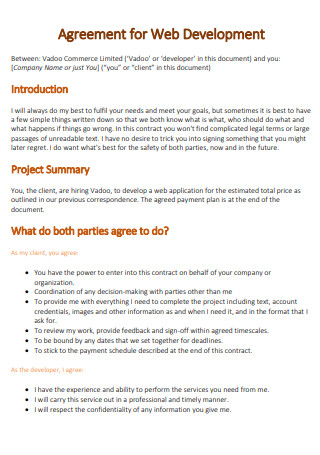
Web Development Agreement
download now -
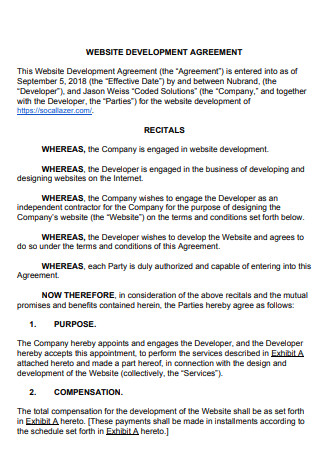
Website Development Agreement
download now -
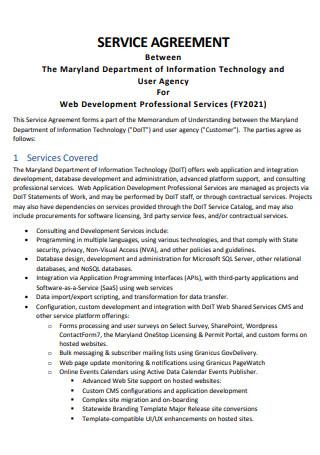
Web Development Professional Services Agreement
download now -
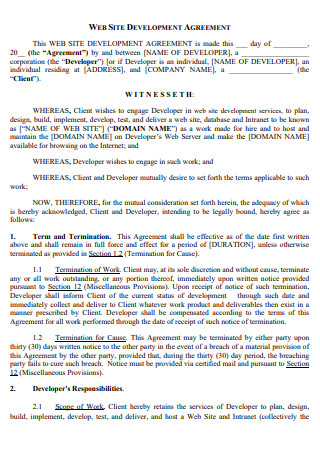
Web Development Agreement Template
download now -
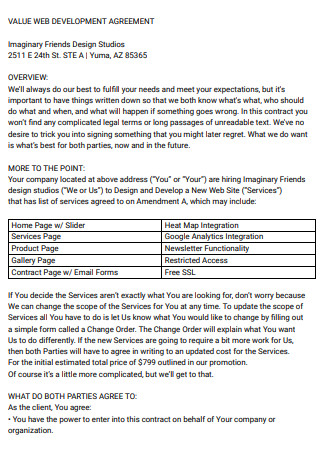
Value Web Development Agreement
download now -
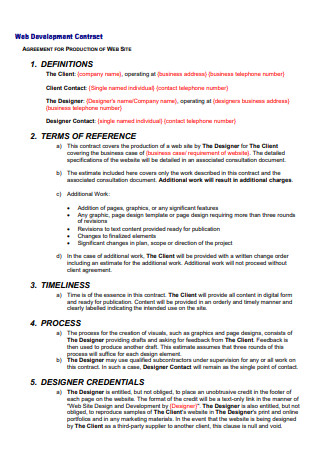
Website Development Contract Agreement
download now -
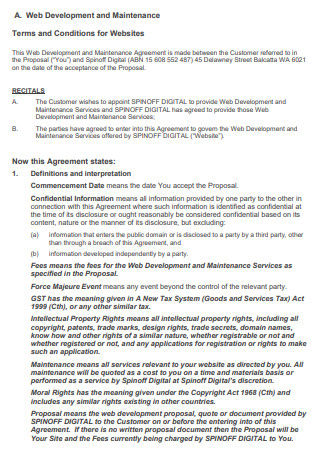
Web Development and Maintenance Agreement
download now -
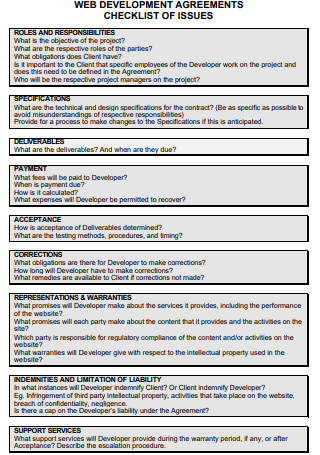
Web Development Agreement Checklist
download now -
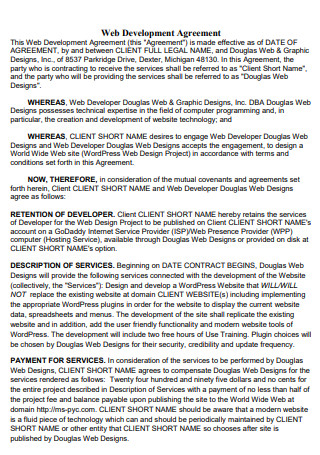
Website Development Service Agreement
download now -

Web Development Confidentiality Agreement
download now -
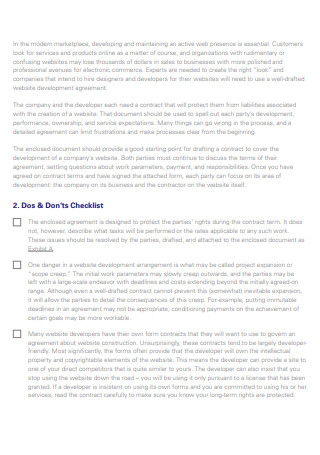
Simple Web Development Agreement
download now -
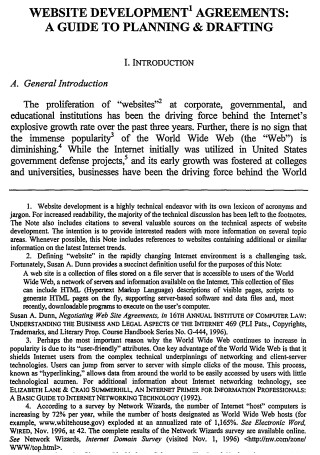
Drafting Web Development Agreement
download now -
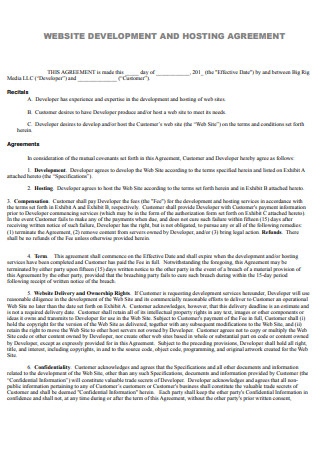
Web Development And Hosting Agreement
download now -
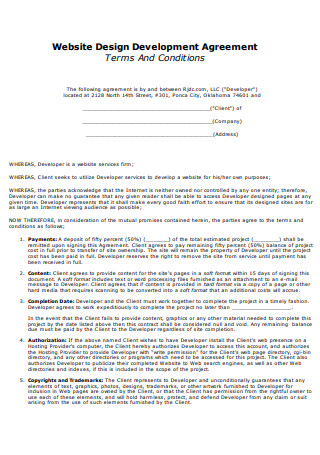
Web Design Development Agreement
download now -
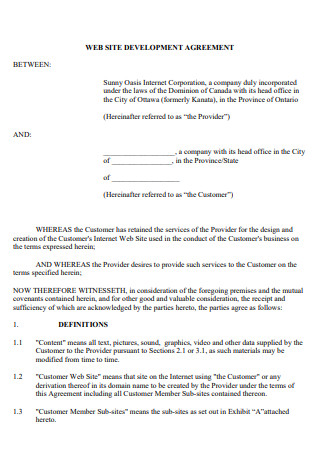
Web Development Agreement in PDF
download now -
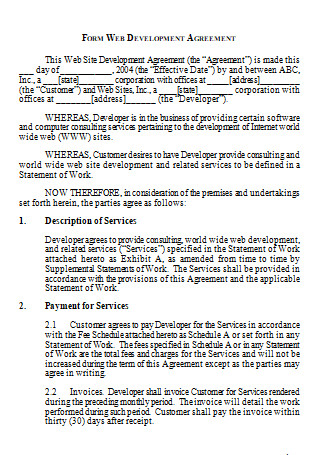
Web Development Agreement Form
download now
FREE Web Development Agreement s to Download
15+ SAMPLE Web Development Agreement
What Is a Web Development Agreement?
What Is Web Development?
How to Write a Web Development Agreement
Must-Haves for Your Website Development Agreement
Reasons to Terminate an Agreement
FAQs
Do web developers have ownership of their work’s copyright?
What other legal documents should be included in a web development business?
What is the significance of an agreement?
What Is a Web Development Agreement?
A website development Agreement acts as a contract between a company or business and a web developer. The agreement specifies the web developer’s obligations and tasks, the company’s liabilities, terms and conditions, website warranties and representations, and the assignment of duties. This document is prepared to lay out the details for the web development services that will be offered. This crucial contract, which includes signatures from both the developer and the website owner, assists each side in setting expectations. This is why it is crucial for parties to create an agreement for website development and hosting. This article provides a web development agreement sample that you can use as a reference as you make your own.
What Is Web Development?
According to Techopedia, Web development is the coding or programming that allows a website to work according to its owner’s specifications. It focuses on the non-design aspects of website development, such as coding and markup authoring. Web development encompasses anything from simple text pages to large web-based programs, social networking apps, and e-commerce apps. To create websites, most web developers employ Hypertext Markup Language, Cascading Style Sheets, and JavaScript. Front-end developers, back-end developers, and full-stack developers are the three types of web developers. A front-end developer is responsible for the visual components of the website’s layout, navigation bar, and interaction, as well as tying all of its pieces together.
How to Write a Web Development Agreement
A web development project agreement is necessary between two parties, the Company, and their hired web developer to ensure that the details they have discussed will be followed through. The clause guidelines that follow will assist you in comprehending the format and provisions of your agreement. When modifying or developing your own website development contract, you may use the sample contained in this packet as a starting point. You can check out the web development service agreement template this article is provided with so you can follow along with the structure as you write your own.
Step 1: Write an Introduction
In the very first step, you would need to identify the document as a website development agreement. Make a note of the date the agreement was signed. Determine who the parties are and what form of company they are. The recital provisions set the tone for the agreement and provide important Background Statements and information on the parties. The recitals establish the parties’ purpose and ability to employ the developer to construct the client’s website. Fill up the blanks with a brief summary of the company’s operations. You should also state the parties’ motivations for engaging in the contract. This section basically affirms the parties’ agreement that the developer will build the company’s website.
Step 2: Clarify the Confidential Information
For the purposes of the agreement, defines private information and outlines how the developer will handle it. Note two key points: the developer can only use the information for the purposes specified in the agreement, such as if the information was disclosed to assist the developer in completing its services, the information can only be used for that purpose, and the developer can only discuss the information with certain individuals within the company. Again, the included agreement is drafted in the company’s favor and does not include any provisions for the protection of the developer’s proprietary information.
Step 3: Establish the Respective Responsibilities
The responsibilities supplied are not intended to be exhaustive or universal. Feel free to omit any clauses that do not pertain to your agreement. Additional duties can be added by both you and the other party in the places provided. If issues emerge in the future, this provision divides obligations between the parties and shields each from the repercussions of the other’s careless or purposeful behavior. State that the developer will be required to do normal maintenance work for a length of time following the development. If you and the other party agree that the developer will be required to provide additional long-term maintenance, you should create a separate agreement to regulate each party’s rights and duties.
Step 4: Define the Compensation
The parties agree that the developer will be compensated for his services. This part, however, defers the payment explanation once again. If the remuneration will be paid in installments rather than all at once, the bracketed phrase should be used. Remove the bracketed statement if this is not true to your agreement. This means that the contract will be in effect for as long as it takes to finish the agreed-upon services or until the parties mutually agree to end it. The bracketed statement is only a reminder that the contract will not terminate until the developer’s website warranties have expired.
Step 5: Intellectual Property
Each participant guarantees that their property and labor will not infringe on the intellectual property rights of others. It further stipulates that the developer will not infringe on the company’s trademarks or acquire a trademark that is confusingly similar to the company’s. This provision states that when the agreement expires, the developer may not utilize the company’s trademarks. Indicates that any modifications to the agreement must be submitted in writing to be effective. It further specifies that if one party wishes to assign its duties and interests under the agreement, it must first get the written consent of the other party. Even if one component of the agreement is subsequently declared invalid, the conditions of the agreement as a whole are protected.
Step 6: Ensure the Signatures
Even if the parties sign the agreement in various locations or use technological devices to send signatures, all of the distinct portions will be deemed part of the same agreement, according to the provision’s title. In today’s world, where signing parties are seldom in the same city, much alone the same room, this clause assures that business may be done promptly without jeopardizing the agreement’s overall validity. But if it is possible to print out physical documents and obtain physical signatures, then all the better. Otherwise, you could never go wrong with electronic signatures as long as it is legitimate.
Must-Haves for Your Website Development Agreement
For each web Design job, a website development agreement is essential. While each development agreement is unique, the majority of them have certain common elements. The only way to ensure that all of your web development demands are satisfied in full is to work with a lawyer who can design a tailored contract based on your needs, but there are a few elements that no agreement is complete without.
Reasons to Terminate an Agreement
If a client does not find it suitable for the web development terms and conditions to meet their expectations, then they are free to terminate the agreement. Just as the developer is free to terminate the agreement if their needs and requirements are not met by the company employing their skills and services. With that being said, the following points are stated and given for you to be aware of the possible reasons to terminate the agreement document brought to existence by the company and developer. Your reasons may not be mentioned below but as long as they are valid, then the other party would likely understand.
FAQs
Do web developers have ownership of their work’s copyright?
Copyright protection is provided free of charge and is applied immediately when a piece of ‘work’ is generated. Copyright protects the HTML and CSS you create, and you own the copyright. Additionally, any images, artwork, or trademarks you developed for the website may be protected by copyright. Obviously, you will not possess the copyright on someone else’s creative work if you duplicated it for example, by downloading a picture from the Internet. In that case, it is important to credit the photograph owner, even if it is a stock image.
What other legal documents should be included in a web development business?
This article has discussed the necessity of establishing a Web Design Agreement with your clients, as well as a privacy policy, website disclaimer, and terms and conditions for your website in earlier sections. If your web development company has workers, you should consider having these as well. Employment contracts with each of them that contain well-written confidentiality and non-compete terms, as well as employment policy papers such as an employee handbook and a social media policy.
What is the significance of an agreement?
To safeguard your interests and defend your rights, you should have your agreements in writing. Furthermore, all parties will have a clear understanding of what is expected of them and, more significantly, what is and is not agreed to.
Now that you have reached the end of the article and know all there is to write a web development agreement, you are ready to proceed to write a Contract. Check out the available web development contract agreement template we have prepared for you. Additionally, there is a web development contract agreement sample that you can check out to follow through with the structure if you want something more personalized for your company.
